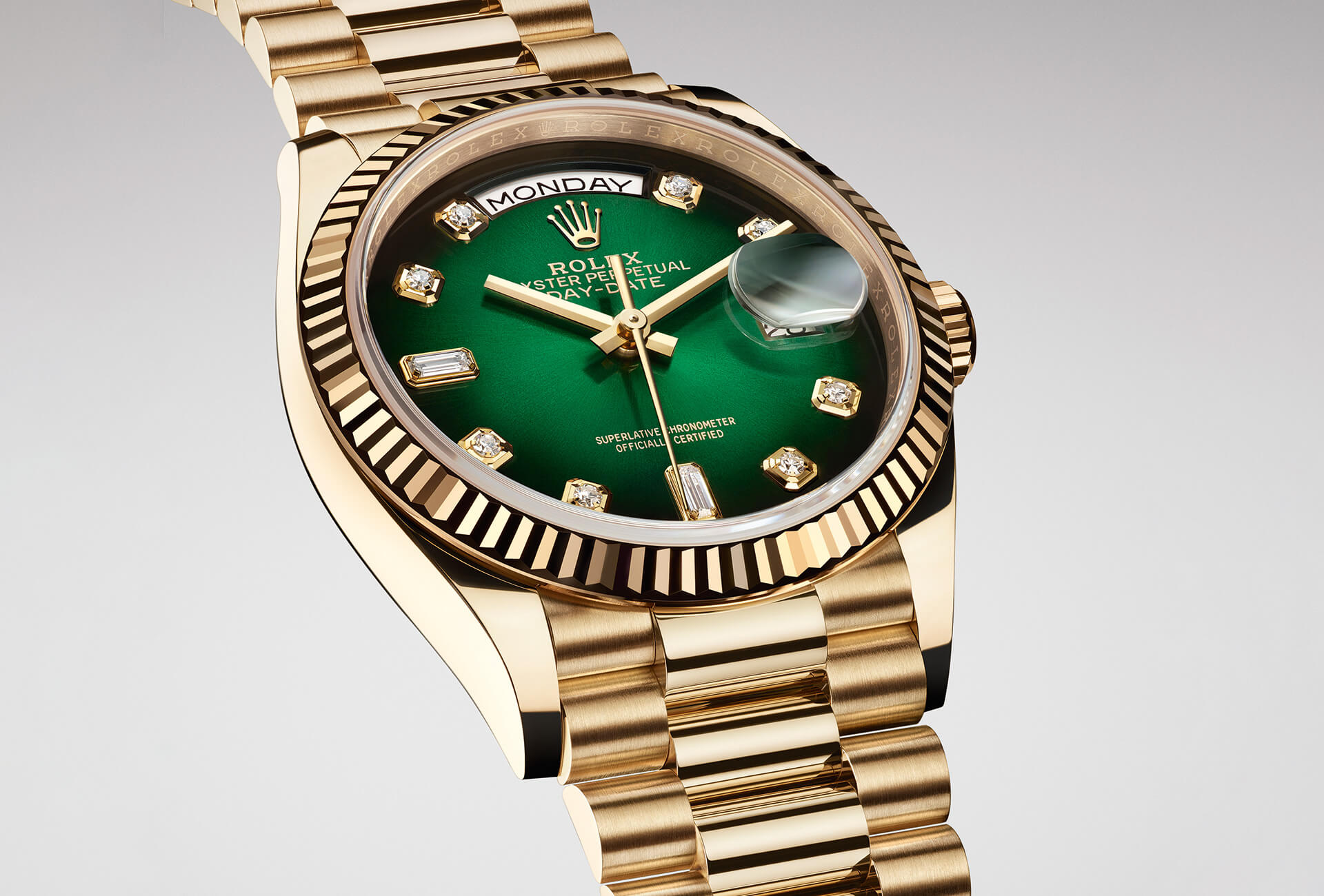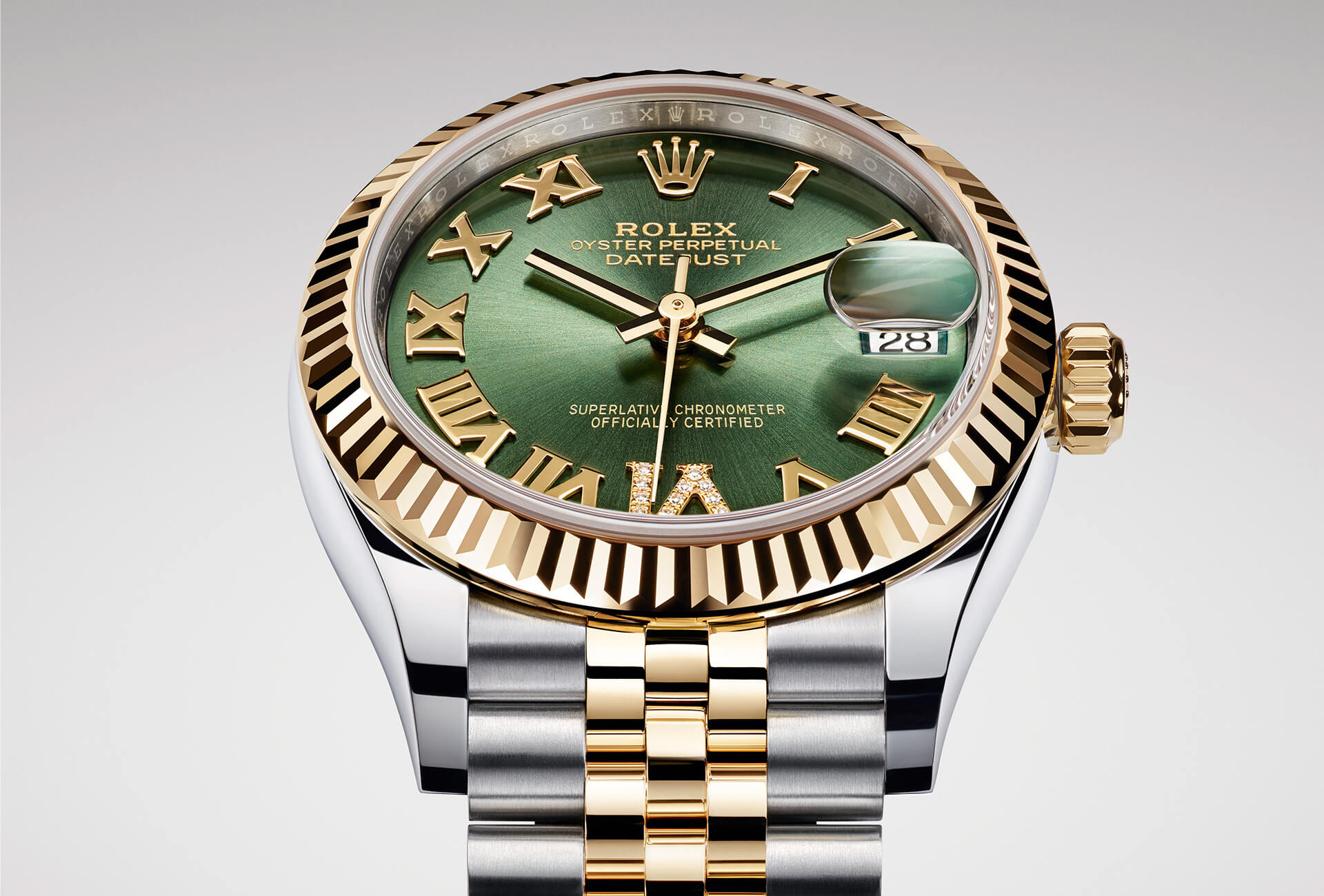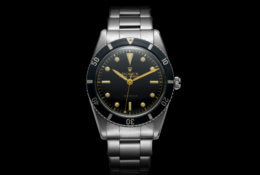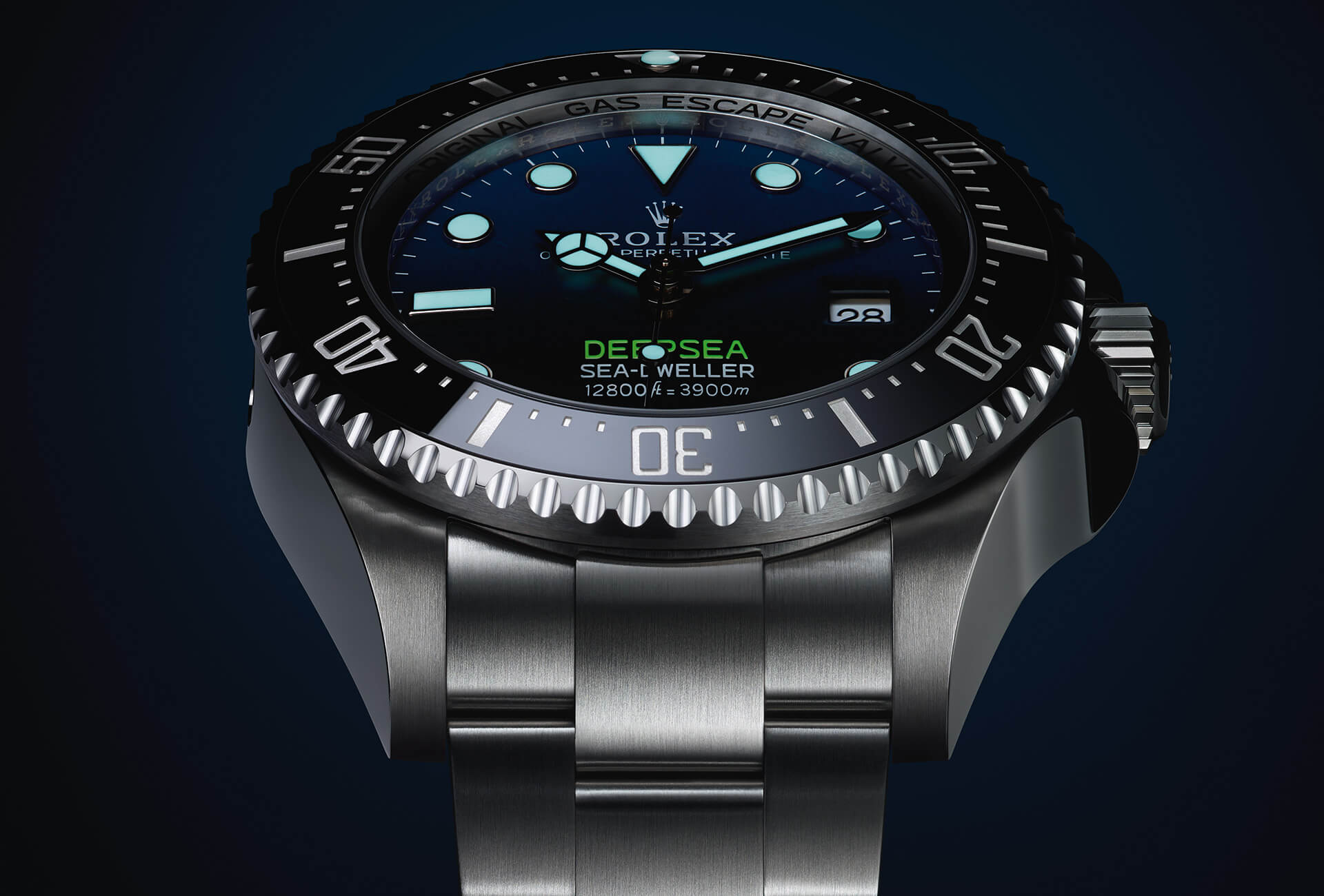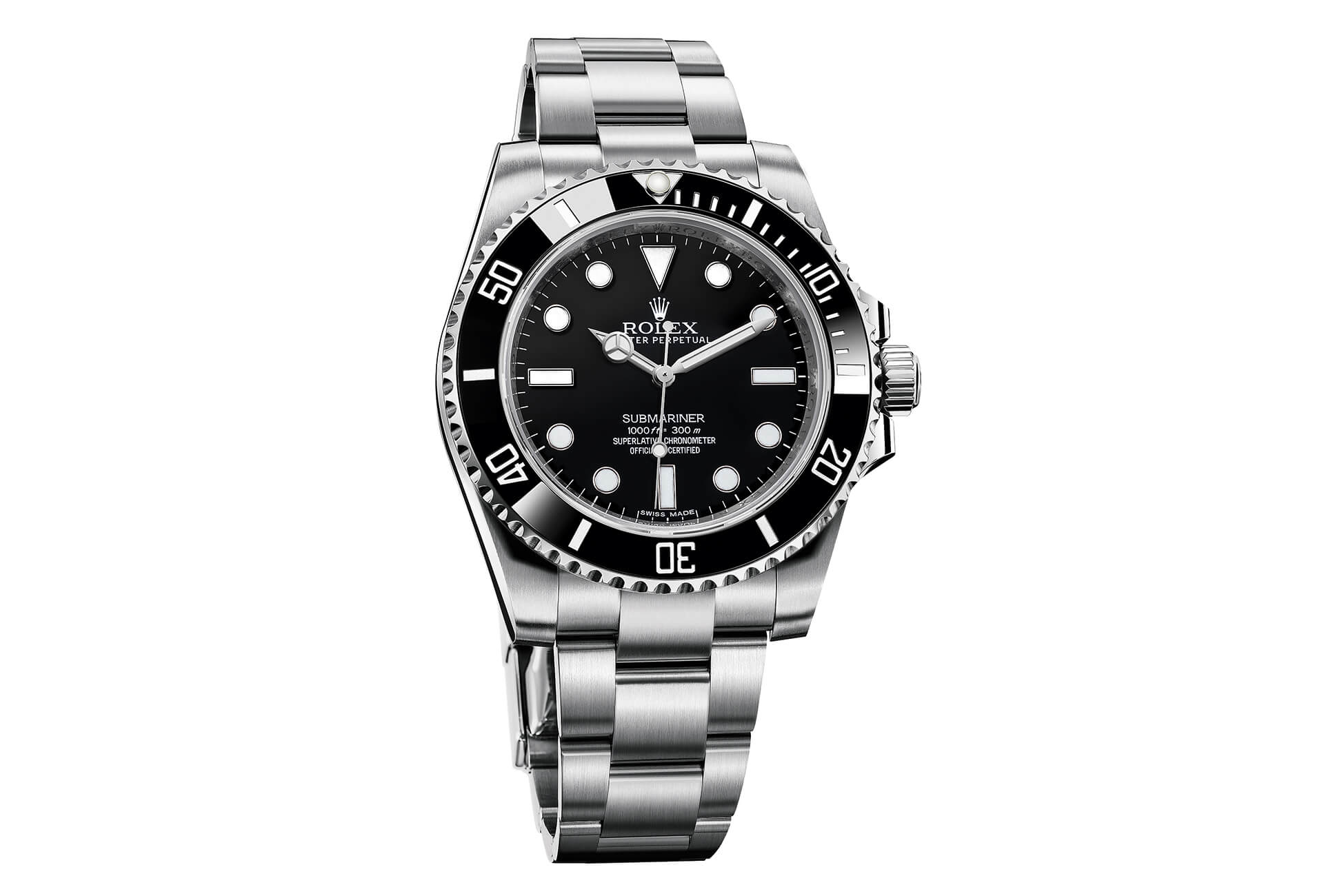When presenting the year’s new releases, Rolex typically does so by picking a theme that resonates with the brand and its history. This could be exploration or, as is the case at Baselworld 2019, yachting and the watch most closely associated with it, the Oyster Perpetual Yacht-Master. As the brand explains, the sea is one of its natural environments: “Rolex has shared special ties with the world of sailing since the 1950s, when it began to forge partnerships with the world’s most prestigious yacht clubs and first started to support pioneering sailors in their quests to explore new routes and attempt new records. Often navigating single-handed, these modern-day mariners set out spurred on by dreams and ambition, demonstrating incredible resolve in facing the ever-changing and often perilous conditions at sea. Rolex watches have crossed parallels and meridians on the wrists of intrepid skippers and ardent yachting enthusiasts.”
A stand-in for the Sub
Rolex has gone out of its way to develop watches with the functionalities these intrepid sailors need. Apart from the obvious water-resistance, they offer beyond average robustness, legibility in all circumstances, and the reliability of a professional watch. This concern for accuracy goes back to the days when sailors needed an instrument capable of keeping precise time at sea in order to calculate longitude. Combined with latitude, corresponding to the height of the sun, it was then possible to plot the ship’s position. Thus began the grand era of the marine chronometer, a task that would occupy some of the greatest minds in watchmaking of the eighteenth century and, as Rolex reminds us, beyond: “Until the beginning of the twentieth century, large clock chronometers were the only instruments capable of providing the required accuracy on the high seas. Hans Wilsdorf, the founder of Rolex, set about changing this. Convinced that the wristwatch represented the future of the watchmaking industry, he was intent on proving that this small timepiece could rival the precision of the best marine clocks.”
In 1910, the Bureau de Contrôle de la Marche des Montres in Biel, Switzerland, granted Hans Wilsdorf the first ever chronometer certificate for a wristwatch. Four years after this distinction, Kew Observatory in the United Kingdom issued a certificate for another Rolex wristwatch. So much for precision, now for water-resistance. Here too, Hans Wilsdorf blazed a trail with the Oyster case, introduced in 1926, followed in 1931 by the Perpetual rotor system for automatic winding. Water-resistant, accurate and self-winding, the Oyster Perpetual took marine instruments out of the captain’s cabin and onto the wrist. The Yacht-Master is the direct descendant of these early models (though preceded by the Submariner). After chronograph versions in the 1960s, it sat quietly for a couple of decades until Rolex, reluctant to make changes to the Sub’s iconic design, saw the Yacht-Master as a valid alternative, being similar in style to the Submariner but with a more urban feel. The first collection was launched in 1992. The Yacht-Master II, designed for regattas, followed in 2007.
Gold in all its forms
The new-generation Yacht-Master unveiled at Baselworld is the first occurrence in the range of a 42mm diameter. The bidirectional rotating bezel is fitted with a 60-minute graduated Cerachrom bezel insert in matt black ceramic. The raised graduations and numerals are moulded into the ceramic then polished. Also making its debut is calibre 3235, a new-generation movement that incorporates the energy-efficient Chronergy escapement in anti-magnetic nickel-phosphorous and a blue Parachrom balance spring made from an exclusive paramagnetic alloy that is ten times more precise than a conventional balance spring if exposed to shocks. The oscillator is mounted on high-performance Paraflex shock-absorbers. Thanks to its barrel architecture and the escapement’s superior efficiency, power reserve extends to 70 hours. Like all Rolex watches, this Yacht-Master has Superlative Chronometer certification for its precision of -2/+2 seconds per day.
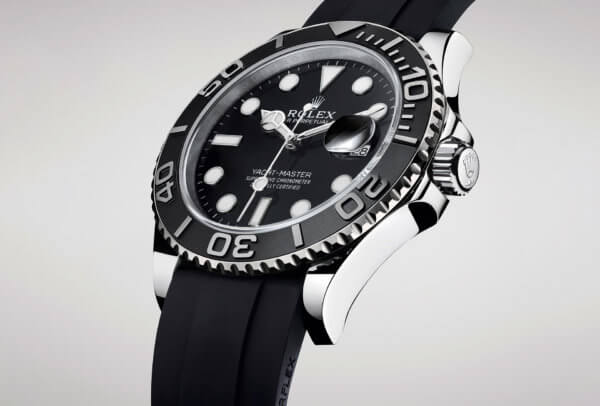
Another of the new Yacht-Master’s features, shared with all the year’s releases, is the omnipresence of gold; white gold in this instance while the Sea-Dweller – the “watch of the deep”, also powered by calibre 3235 – comes in yellow Rolesor (a combination of Oystersteel and 18k yellow gold). The Cosmograph Daytona 2019 is made precious by an 18k yellow gold case, and by the black lacquer and diamonds that intertwine with the champagne-coloured chronograph counters on the dial. In a similar vein, the Day-Date 36 is proposed with a green ombré dial or a decorative stone dial with a diamond-set bezel, inside a case in yellow or white Everose gold. The Datejust 36 and 31 opt for white Rolesor (Oystersteel with white gold) or yellow Rolesor or Everose Rolesor. The only model sticking with steel is the GMT-Master II, this year with a black and blue Cerachrom bezel insert and a Jubilee bracelet. Even when manning the sails, the modern mariner clearly isn’t immune to the lure of gold.












